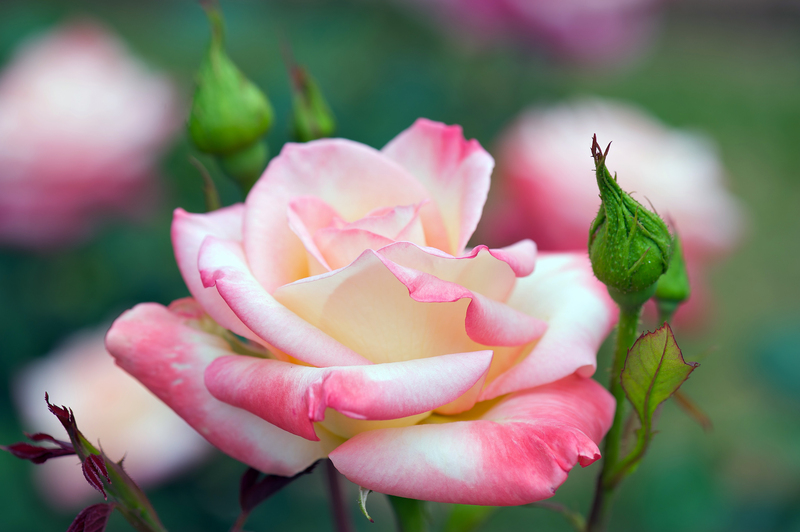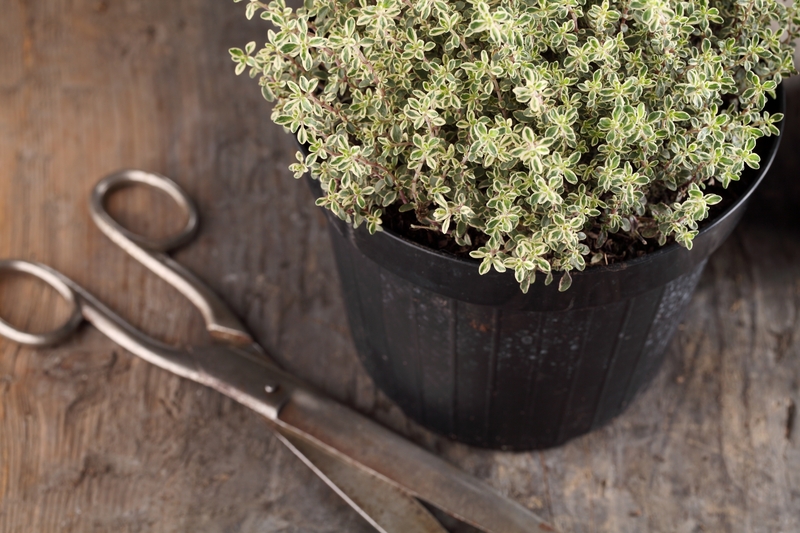Crafting Gardens that Delight Owners and Dogs
Posted on 30/09/2025
Crafting Gardens that Delight Owners and Dogs
Welcome to the ultimate guide on crafting gardens that delight owners and dogs. If you're passionate about gardening and have a canine companion at home, you may already know the challenges -- and joys -- of sharing an outdoor space. This article will walk you through creative design, plant selection, pet safety, and aesthetic tips that result in dog-friendly outdoor spaces everyone can love. Let's dig in!
Why Create a Dog-Friendly Garden?
Gardens are more than just visual delights--they are vibrant ecosystems and, with the right touch, a source of joy for pets and their humans. Building a dog-friendly garden means creating a safe, beautiful environment that accommodates the needs of both the gardener and the playful pup. Such gardens foster healthy outdoor activity, stimulate your dog, and enhance your living space, making it even more rewarding for you.
Benefits for You and Your Dog
- Exercise & Enrichment: Dogs need room to run, sniff, and play. A garden designed with your dog in mind promotes regular physical activity and mental stimulation.
- Stress Relief: Both gardening and spending time in nature have been shown to relieve stress. Sharing this green oasis with your dog multiplies the joy.
- Bonding Opportunities: Enjoy quality time outdoors with your pet, which strengthens the human-animal bond.
- Enhanced Curb Appeal: Well-designed gardens boost property value and neighborhood admiration.

Understanding Dog Behaviors in the Garden
Dogs and gardens can sometimes be a tricky combination. Before setting out to craft your garden, observe your dog's habits. Notice which areas attract digging, running, or lounging. *Understanding your dog's natural instincts helps you to shape a space that satisfies their needs while protecting your cherished plants.*
Common Canine Behaviors
- Pathmaking: Dogs often create "desire paths" by running the same routes to patrol borders or chase after wildlife.
- Digging: Some breeds, like terriers, have a deep-seated urge to dig. Others dig to cool off or hide toys.
- Scent Marking: Dogs might mark their territory, which can burn grass or other sensitive foliage.
- Chewing: Puppies are notorious plant chewers. While it's part of their exploration, it can be harmful if toxic plants are present.
Smart Design: Dog-Friendly Garden Layouts
Let's explore how to create gardens that dogs enjoy without compromising on beauty. Combining smart landscaping with practical doggy needs is the key to harmony.
The Importance of Defined Paths
_Designing purposeful pathways_ suits both your garden's aesthetics and your dog's natural inclinations.
- Hardscaped Trails: Create stone, gravel, or bark-mulched paths following your dog's favorite routes. They minimize lawn wear and help guide energy away from delicate beds.
- Border Barriers: Use low fencing, raised beds, or dense shrubbery to discourage exploration in off-limits areas.
Zones for Play, Rest, and Observation
- Open Lawns: Dedicate a portion of the garden as a play lawn for fetching or romping. Durable grasses like Bermuda or fescue handle high paw traffic well.
- Shaded Napping Spots: Plant trees or install a pergola to provide cool spots for dogs to lounge during hot weather.
- Observation Points: Dogs like to keep an eye on their territory. Ensure there's a clear view to the street or other points of interest.
Choosing Dog-Safe Plants and Mulch
Selecting the right plants is crucial in pet-friendly landscapes. Some common garden plants are toxic to dogs, while others are safe and even beneficial.
Non-Toxic Plants for Canine Spaces
- Herbs: Basil, rosemary, sage, and thyme are generally safe for dogs and add delightful aroma and flavor to the air.
- Flowers: Marigolds, sunflowers, asters, and snapdragons are beautiful and usually non-toxic.
- Shrubs: Camellia, bottlebrush, and hibiscus offer structure and color without risk.
- Grasses: Blue oat grass, fountain grass, and other ornamental varieties provide texture and interest.
Always double-check the ASPCA's list of toxic and non-toxic plants before purchasing new additions.
Mulch and Ground Covers
- Pet-Safe Mulch: Cedar, pine, and cypress mulches are less harmful than cocoa mulch, which is toxic to dogs. Check for mold, as some mulches grow fungus harmful to pets.
- Groundcovers: Creeping thyme, moss, or Irish moss withstand foot traffic and create lush, living carpets.
Avoiding Hazards: Creating a Safe Outdoor Haven
Dangerous Plants to Avoid
- Lilies (highly toxic even in small amounts)
- Oleander
- Foxglove
- Daffodil and Tulip Bulbs
- Azalea
Garden Chemicals and Fertilizers
Use only dog-safe fertilizers and pest control. Choose natural or organic options. Common garden chemicals--like insecticides, snail baits, and weed killers--may be highly toxic to your furry friend. Avoid cocoa shell mulch, and always store chemicals out of reach.
Pet-Friendly Water Features
Dogs love water! Adding a safe water feature enriches your canine's garden experience and enhances your landscape's ambience.
- Shallow Ponds or Bubblers: Keep water no deeper than a foot and ensure easy exit points for dogs. Circulating water deters mosquitoes and keeps things fresh.
- Dog Water Bowls: Place large, heavy ceramic water dishes around the yard so dogs stay hydrated during play.
- Splash Zones: Consider a doggy splash pool or a trickling fountain for hot days. Ensure the area drains well to prevent mud and mold issues.
Durable Hardscaping for Paws and People
Durability is key when landscaping for dogs and owners. Choose materials that withstand scratching, digging, and the occasional accident, while fitting seamlessly into your garden's design language.
- Paving Stones: Laid flat and close together, these create inviting paths and patios that aren't harsh on paws or knees.
- Decking: Composite materials resist moisture and scratches better than many wood types.
- Artificial Turf: Modern options handle pet use well, resist digging, and are easy to clean.
- Gravel: Opt for pea gravel over sharp stones, but beware if your dog is a digger or tries to eat rocks.
Fun Features to Elevate Your Shared Garden
Why stop at utility? Let's explore features that can turn your space into a true paradise for both pup and gardener.
- Agility Equipment: Weave poles, low hurdles, and tunnels can double as fun DIY projects.
- Sandbox or Digging Pit: For dig-loving breeds, a dedicated area filled with play sand redirects destructive digging.
- Hidden Treat Trails: Install scent gardens or plant aromatic herbs and hide treats among them for a daily sniffing adventure.
- Sturdy Benches: Provide spaces for owners to relax and supervise their dogs at play.
Maintenance Tips for Dog-Owner Gardens
Routine Care
- Mowing and Trimming: Keep grass short to discourage ticks and other pests.
- Waste Management: Pick up after your dog often to keep play zones pleasant and prevent lawn damage.
- Check Fencing: Ensure boundary fences are intact and tall enough to safely contain your pet.
- Plant Checks: Survey the garden regularly for chewed, trampled, or ailing plants.
- Water Cleanliness: If you have a pond or water feature, keep it clean, fresh, and safe for all creatures.
Design Inspiration: Garden Styles for Every Owner and Dog
Whether you fancy a lush cottage look, a sleek minimalist retreat, or a sprawling country oasis, there are endless ways to create a garden that's dog-friendly and delightful for you. Here's a taste of what you can achieve:
Naturalistic Woodland Paradise
- Shady trees for lounging
- Layered understories of ferns and hostas (check for pet safety)
- Mulched paths meandering through foliage
Modern, Minimalist Courtyard
- Paved geometric zones for running
- Raised planter beds with non-toxic succulents and grasses
- Water bowls built into stone benches
Cottage Charm with Colorful Borders
- Sturdy perennial mixes (like asters, echinacea, sage)
- Climbing roses with protected bases
- Wicker or wooden dog beds hidden among blooms

Encouraging Good Dog Behavior in the Garden
Creating the best gardens for owners and dogs goes beyond design--it's also about training. Teach dogs to respect boundaries, reward gentle play, and use designated digging or toilet zones. Use positive reinforcement to help your pet understand the joys (and rules) of the garden.
Simple Training Strategies
- Boundary Training: Walk your dog around garden borders and reinforce "no-go" areas with training and physical cues.
- Positive Reinforcement: Reward dogs with treats and praise for using sandy digging zones or staying on paths.
- Toy Time: Encourage play with garden-safe toys rather than sticks or shoes.
Conclusion: Outdoor Bliss Awaits
Crafting gardens that delight owners and dogs is a rewarding endeavor. Share your love of gardening with your furry companion by designing spaces that are safe, stimulating, and beautiful. From smart plant choices and paths to playful features and gentle training, you can create a landscape that enhances your life together.
*Start today, and turn your outdoor area into a paradise where both paws and people can thrive! Explore more tips on dog-friendly gardens and find inspiration in every season.*

